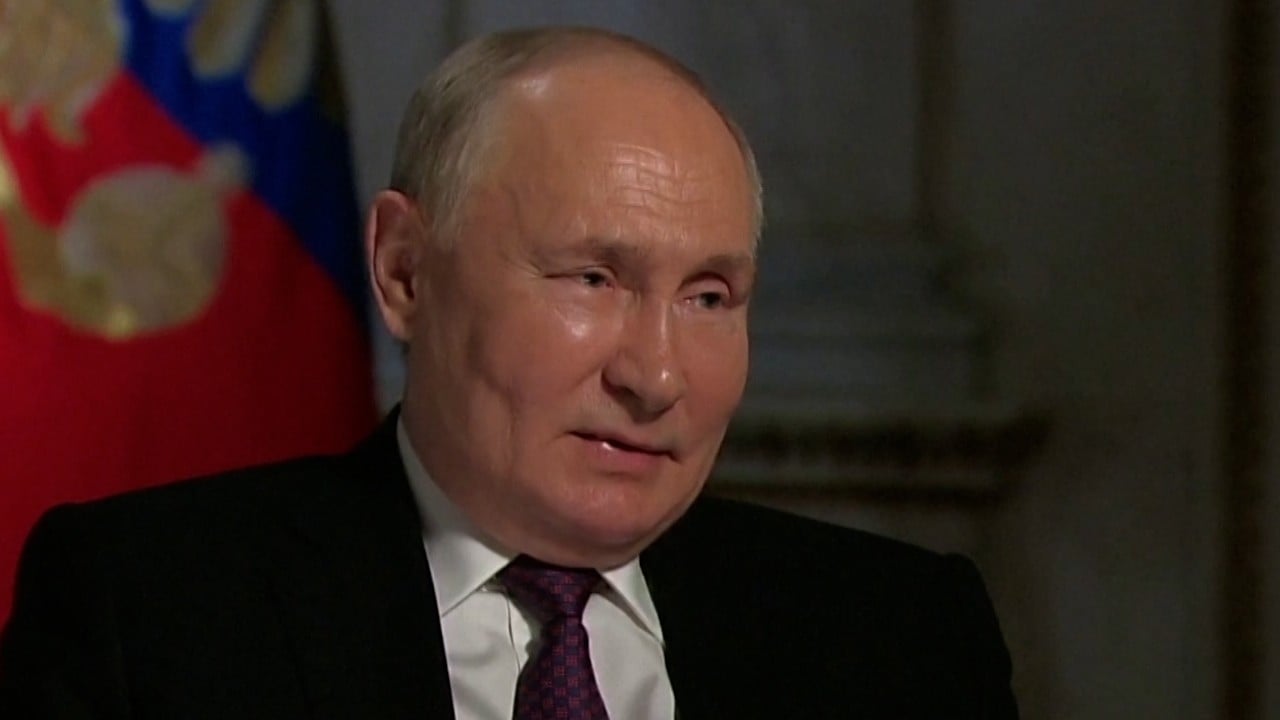
Explainer | How will G7 loan Ukraine US$50 billion using frozen Russian assets?
- The deal will give Kyiv a boost in the fight against Moscow’s invasion, but key questions still need to be resolved
The Group of Seven rich democracies have agreed to use proceeds from frozen Russian assets to give Ukraine US$50 billion in loans, aiming to ensure Kyiv can continue its fight against Russia’s invasion and to signal Western resolve to Moscow.
Leaders of the G7 – Britain, Canada, France, Germany, Italy, Japan and the United States – agreed to the plan on Thursday, along with top officials from the European Union, where most of the Russian assets frozen as a result of the war are held.
The deal capped months of intense negotiations, and came after Washington’s initial push to seize the assets themselves ran into strong opposition from European countries.
But officials say some key questions still need to be resolved, despite the agreement in principle by the leaders at a summit at the luxury Borgo Egnazia resort in southern Italy.
Why has the G7 adopted this plan?
The EU has already adopted a plan to skim the profits from the assets and use them to fund arms and other aid for Ukraine. But Washington pushed to “front load” the revenue from the assets by using them to give Ukraine a big lump sum now.
Officials say EU leaders agreed to the idea in part because it reduces the chances of Ukraine being short of funds if Donald Trump returns to the White House or the US Congress holds up funding, as it did for months with its most recent aid package.
The Republican former US president had been critical of US aid to Ukraine, but in April shifted his tone to say he viewed the survival of Ukraine as important to the United States.
Where will the US$50 billion come from?
It will come from loans provided by the G7 members – the United States, Britain, Germany, France, Italy, Canada and Japan – and by the European Union. The loans are backed by future interest from frozen Russian assets.
They are to be repaid using either the interest or reparations by Russia.
Some €260 billion (US$281 billion) in Russian assets such as central bank reserves have been frozen under sanctions imposed over Moscow’s invasion of Ukraine in February 2022.
Around €190 billion of the assets are held in Euroclear, a Belgium-based central securities depository, making the EU a key player in any plan to make use of the assets. The United States holds about US$5 billion of such assets.
Officials estimate they will be able to call upon some €2.5 billion to €3.5 billion in interest every year from the assets to repay the loans.
How much will each G7 member lend to Ukraine?
The precise amounts must still be determined.
A senior US official said Washington had authorisation from Congress to provide up to US$50 billion in loans to Ukraine, but expected other countries to step up with their own loans, reducing the amount the US would have to lend.
EU officials said that the European Union – which includes G7 members France, Germany and Italy – could provide about half the US$50 billion. Canada said on Thursday that it stood ready to provide $5 billion in funding.
When will the money arrive and what is it for?
Cash will arrive by the end of this year, although some could still flow beyond that, depending on Ukraine’s ability to absorb and disburse the funds, two sources said.
One official said there would be multiple disbursement channels for Ukraine that could be used for different purposes, military, budget, reconstruction and humanitarian support.
That will allow Japan, which cannot constitutionally fund military expenditures abroad, to participate.
What if the assets are no longer frozen?
The EU sanctions that froze the assets come up for renewal every six months, requiring the approval of all 27 EU members.
That has raised the prospect that a single EU country – such as Hungary, which maintains close ties with Moscow – could block the renewal at some point and unfreeze the assets.
EU officials say they are exploring options to reduce this risk, such as making renewals less frequent or having backup national legislation in Belgium to keep the assets frozen.
If Ukraine and Russia reach a peace deal, Western officials anticipate the assets could form part of reparations to Ukraine so they could be used to repay the loan.
“If there is a peace settlement, either the assets stay immobilised and keep generating interest to repay the loans, or Russia pays for the damage it’s caused. Either way, there’s a source of repayment,” a senior US official said.
What has Russia said?
Russian President Vladimir Putin on Friday described the West’s seizure of Moscow’s assets as “theft” and said it would not go unpunished.
Foreign ministry spokeswoman Maria Zakharova said on Thursday that Moscow’s response to the G7 scheme would be very painful for the European Union.
The EU has declared that interest generated from the assets are “windfall” profits that do not belong to Russia.



